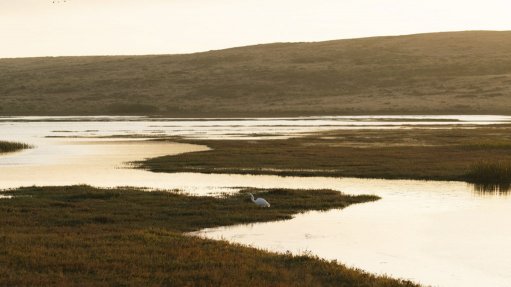
(Virtual Showroom): South Africa faces a significant crisis in that an exponentially expanding population creates a demand for wastewater treatment that far surpasses current infrastructure and the capabilities thereof. This generally results in raw, untreated wastewater entering our rivers and streams on the banks of which high density and often informal settlements have been established. This poses a significant health risk as these communities are often highly reliant on nearby rivers as a source of water for cooking, cleaning and washing of clothes. According to the World Health Organization, more than 80 % of the diseases that affect humans are water-borne and are often the result of raw sewage entering downstream watercourses (Sundaravadivel and Vigneswaran, 2010). It is therefore imperative that both the private and public sector in South Africa find sustainable and long-term solutions to wastewater treatment. One such means of achieving this is through “constructed wetlands”.
According to the United States Environmental Protection Agency (2022), a constructed wetland is a treatment system that utilizes natural processes involving hydrophytic vegetation, hydric soils and their associated microbial assemblages to improve water quality. In essence, constructed wetlands act as filters through which wastewater flows and are densely vegetated using hydrophytic vegetation which slows the throughflow of water. As a result, suspended sediment/pollutants within the water becomes trapped and settles out of suspension into the wetland itself. Subsequently, microorganisms breakdown and remove pollutants through a series of microbiological degradation processes (Gopal, 1999). Commonly hydrophytic vegetation used in constructed wetlands are Typha capensis and Phragmites australis (Sundaravadivel and Vigneswaran, 2010). These vegetation types are preferred due to their ability to uptake pollutants in wastewater and utilize it as a nutrient for growth. Further to this, the extensive root network provides a greater surface area to act as a filter and to capture suspended solids (Sundaravadivel and Vigneswaran, 2010) thereby optimizing filtration and treatment.
There are two (2) basic constructed wetland concepts which are applied internationally, namely Free Water Surface (FWS) systems and Subsurface Flow (SF) systems. FWS systems are similar to natural wetlands in that water flows over the bed of the wetland as a shallow water pond and is filtered through the dense stands of hydrophytic vegetation (Wood, 1999). SF systems refer to those which promote water flow in a horizontal or vertical flow path through a shallow, permeable substrate in which hydrophytic plants are established (Wood, 1999). Treated water is subsequently collected in an underdrain for discharge.
Wood (1999) conducted an investigation into the application and performance of seventy (70) constructed wetlands throughout South Africa. Wood (1999) identified that the majority of the constructed wetlands within South Africa were designed according to international designs and specifications and were not suited to South African conditions. The report concluded that the majority of the constructed wetlands were designed with bed media with a low permeability which resulted in surface flow as opposed to ponding and filtration through the bed and hydrophytic vegetation. This subsequently reduced water retention time within the wetlands and reduced treatment of pollutants. Wood (1999) therefore concluded that engineering designs of constructed wetlands in South Africa must take into consideration the hydrological regime through the system with a particular focus on increasing retention times and optimizing treatment potential. Subsequent research by Lakay (2013) on constructed wetlands in the Western Cape produced a similar conclusion. Lakay (2013) concluded that the effectiveness of constructed wetlands in the Western Cape were not up to standards in their effectiveness in reducing pollutants. This was attributed to a poor choice in bed substrate resulting in reduced retention time and low oxygen levels within the systems. Low oxygen levels result in solubilization of minerals and release of phosphorous occurs (Lakay, 2013).
The Department of Water and Sanitation (DWS) are often requesting the establishment of constructed wetlands downstream of discharge sites associated with proposed Wastewater Treatment Works (WWTW) projects as a condition in the Water Use License (WUL). It is quite evident from this article that constructed wetlands are a feasible and sustainable means of treating raw sewage. However, it is essential that the design of constructed wetlands be suited to South African conditions to promote retention times and optimize treatment and filtration of pollutants.